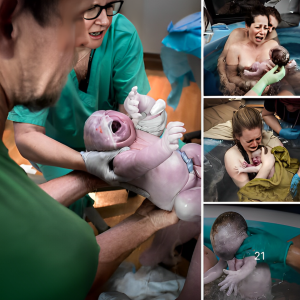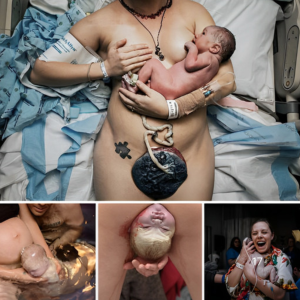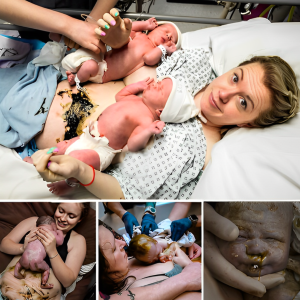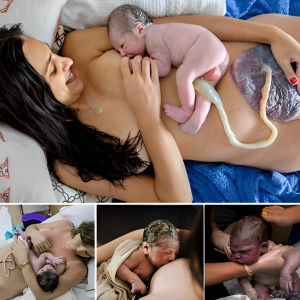The irresistible charm of newborn babies always melts our hearts with their adorable and charming appearance. However, you may be surprised to learn that newborns don’t always look like the soft and perfect babies in the pictures. In fact, they can look greasy, dirty, and even weird in the first hours after birth. Here are five interesting aspects about babies that you may not know:
1. **White cheese-like coating:** Immediately after birth, newborns are covered with a thick layer of white substance called vernix caseosa. This coating forms on the skin of the fetus during the third trimester and has an important role in protecting the baby’s skin from amniotic fluid. It also helps keep baby’s skin soft and protects against infections in the uterus.
2. **Unexpected first bowel movement:** After the baby is born, the baby’s digestive system begins to function and will soon have the first bowel movement. However, your baby’s first stools, called meconium, may surprise you by being black or green and odorless. When your baby starts drinking milk, the color and consistency of his stool will change.
3. **Fuzz all over the body:** You can see that the baby has a soft layer of down all over the body, not just on the head. This lanugo usually appears on the fetus’s body around the fifth month of pregnancy. Although most of the lanugo will fall out before birth, some may remain when the baby is born, but it will usually disappear within a few days or weeks.
4. **Use brown fat to regulate temperature:** Although newborns are accustomed to warmth in the womb, they face significant temperature changes after birth. Instead of shivering, your baby’s body will use a special type of fat called brown fat to create heat. When your baby’s body temperature drops, receptors on the skin send signals to the brain, stimulating the baby’s body to burn brown fat to regulate the temperature until it stabilizes.
5. **The umbilical cord continues to provide nutrition:** While the fetus is in the mother’s womb, the umbilical cord provides oxygen and nutrients from the mother. After birth, when the baby begins to breathe on his own, his lungs take on the role of providing oxygen. However, even after the umbilical cord is clamped and cut, some of the remaining blood from the cord is still transmitted to the baby, helping to provide additional nutrition until the lungs fully take over.
These facts about babies are truly both strange and fascinating, aren’t they? Some things you may already know, while others may be completely new. In any case, with this new knowledge, you will have a new and deeper look at the little angels just born.





